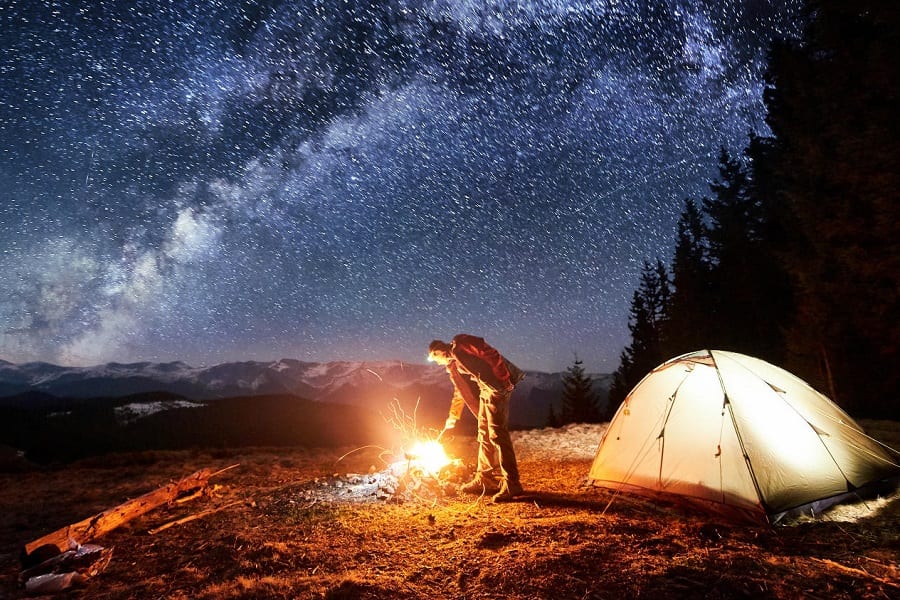As the match strikes the fireplace, red embers shoot up, creating a brilliant blaze setting the mood for a warm, cozy night.
A great way of cherishing family time is huddling around a well-lit bonfire, roasting some marshmallows, and enjoying a cup of hot chocolate. In the cold regions, it has been a traditional pursuit among households.
The advancement of winters will see ardent bonfire experts preparing their wood for the coming bonfire nights.
Contents
Preparing the ring of fire
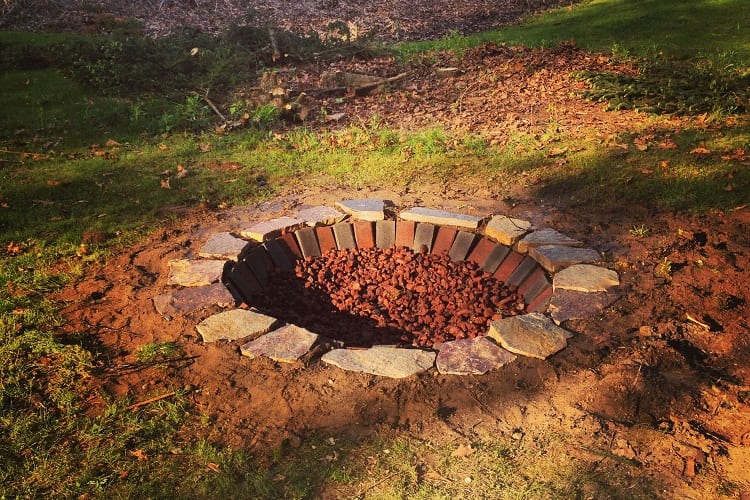
Preparing for a good campfire needs a few things in place and an adequate understanding of fire properties for a different environment, materials, etc.
First, it is essential to go through the area’s protocols where you are looking to camp concerning campfire regulations and permits. For example, specific camping grounds make it mandatory for you to use a fire pit.
Before starting the fire, keep a bucket of water on standby to attend to any emergencies. Furthermore, check the weather before setting out to avoid being disappointed with a rainy or windy night.
Before setting up the place, make sure the area is clear. Ideally, the base should be gravel or sand. It should be free from flammable materials. Thus, make sure to clean out vegetation or forest litter.
The campfire area should also not have low-hanging branches, bushy trees. A clear site with minimum things would prevent the spread of a wildfire.
The next crucial step is to have in place your collection of woods. It includes smaller pieces to help form a sturdy base for starting the fire.
These are called tinder. They catch fire quickly and thus will help you inaugurate the fire easily. Items like twigs, grass needles, dry leaves, forest duff can efficiently forage around the campsite.
An excellent intermediate stage between the tiny twigs and the big logs is the kindling. Dry kindling includes small sticks and branches. The principal resource is the third type of wood, fuelwood. It is what drives and sustains the flames.
Hardwoods are generally considered the favorite choice of frequent campers. They are great for intense and slow-burning flames that are ideal for cooking. These include oak, ash, birch, etc. Softwood is suitable for outdoor bonfires since they emit more smoke. However, since they burn out much faster, they need to be refueled more frequently.
Some softwood options include pine and cedar. In all cases, one should avoid hurling large logs at the campfire as it may disrupt the campfire structure and might take longer than expected to catch fire.
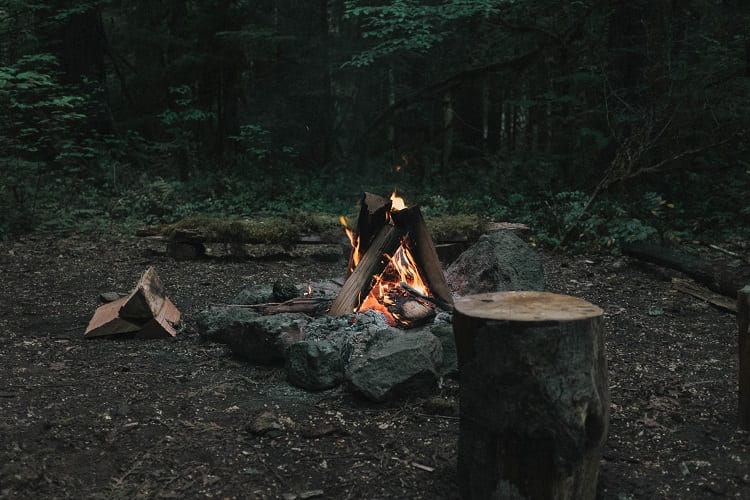
Painted and treated woods should also be avoided since they might react aggressively to ignition. Many companies manufacture high-quality and efficient wood bricks and wood pellets, which could be a sustainable and less cumbersome option.
Preparing a fire pit is crucial for defining the area and sustaining the fire. Make a boundary wall to your fire pit by using stones and rocks. Forming a small crater at the fire pit center will also contain the fire and the ashes. The proper arrangement of the wood will ensure the same.
There are majorly four kinds of ways to go about arranging your fire pit. It is based on the purpose and the longevity of the campfire. Tepee structure is the most common one, placing the wood in a tent-like structure.
After forming a tinder base, the kindling is stacked conically around the tinder base. This arrangement is preferred for cooking. Arranging the tinder and kindling in a Crisscrossed manner will provide a long-lasting fire. A log cabin structure arranges the wood around the tinder base in a square formation, stacking each piece at the right angle.
An upside-down Bonfire involves stacking logs with each layer smaller and perpendicular to the one below to achieve a pyramid structure.
Striking the match and sustaining the fire
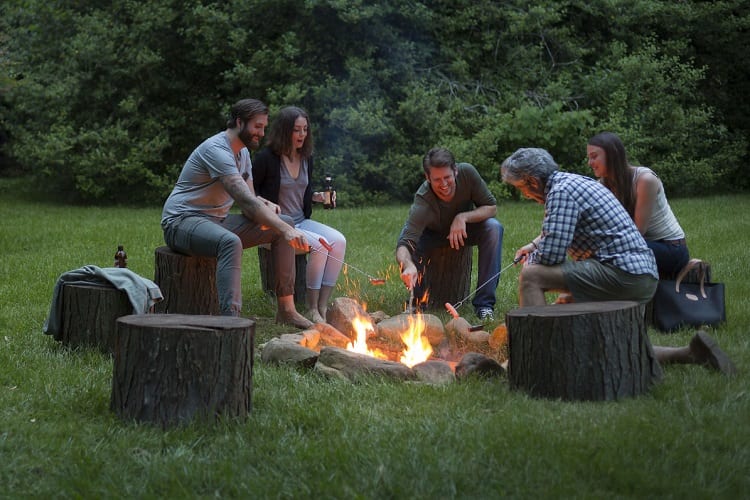
Light your tinder with a match (many prefer waterproof matches). Other fire starters include petroleum jelly-soaked cotton balls, newspaper balls, corn chips, and dryer lint.
You might need to blow into the campfire from the base to feed it with oxygen. As the fire starts growing, keep adding more kindling and fuel wood at intervals. Be careful not to block the passage of oxygen.
Keeping the fire alive is repeating the three-step “tinder-kindling-fuelwood” process repeatedly. An additional tip is to start with softwood and sustain it with hardwood as the latter burns for a longer time, thus ensuring a stable campfire.
Ventilation is another key to keep the fire building. Therefore add logs in a spacious manner for the woods to breathe, add more fuel so they burn out quickly and provide space for oxygen, and frequently blow or fan your campfire to drive the oxygen in.
Campfire etiquette
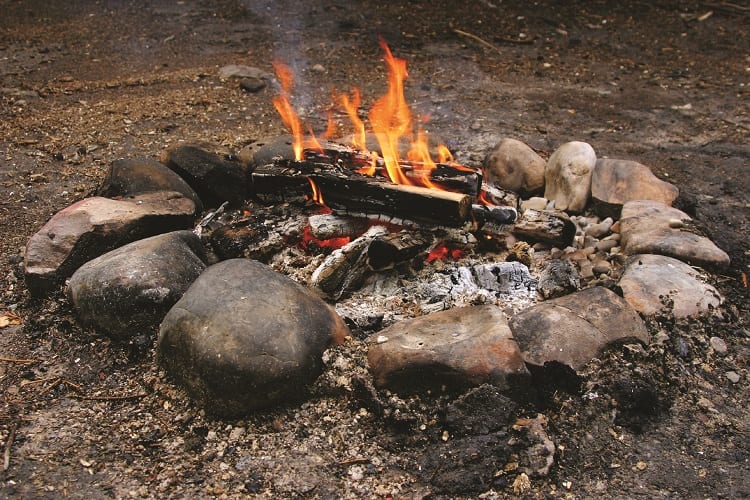
It is essential to be educated about some of the crucial and fundamental protocols to be followed while camping.
It will help avoid mishaps and accidents that could prove to be fatal.
- Once you start the fire, make sure you don’t leave the site unattended. Fire can quickly get out of control if not tamed.
- Do not subscribe to burning dangerous things like glass or aluminum cans as they could prove fatal.
- Avoid the ambition and keep the campfire small and manageable.
- Always keep fire extinguishers or other alternate options like sand and water to tame any unpredictable fire outburst.
- Keep kids and pets at a safe distance from the fire.
After you are done camping, make sure to put out the fire and extinguish it thoroughly before leaving the site. Start by pouring heaps of water to extinguish it.
Then, with the help of a shovel or stick, mix the ashes to make sure there aren’t any partially burning embers. Spread out the woods to make sure they cool down quickly. If required, add more water.
You should finally be able to touch the embers and the ring of stones around the campfire. Giving the campsite an adequate closure will help prevent any new fire from sparking after leaving the grounds.
Clean the camping site to ensure all litter is removed.
Concluding the fire
Fire has been a defining marker of human evolution, advancement, and civilization-building.
Campfires have been traditional markers of human civilization, symbolizing the community spirit. They are also an outdoor pursuit of people with spacious homes near wood sources. It is a great way to be connected to nature.
Learning how to build a campfire the right way will ensure a long-sustained fire and a safe experience. Feeding the campfire with fuelwood regularly is the key to achieving a long bonfire night.
Keeping the right resources and taming the fire is essential for a burning night!
References:

